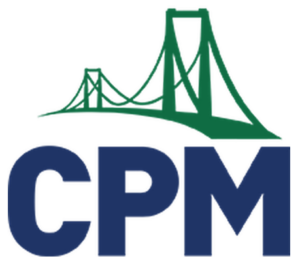Karen Wootton, Assessment Coordinator
At NCSM’s 2015 national conference in Boston, I followed the assessment strand for three days. The majority of the sessions in this strand focused on formative assessment. I anticipated learning new and better things about formative assessment, and as I mapped out my three days I was tingly with excitement! (Yes, I am that much of a nerd.)
I gained some insights and some gems, but mostly I came to the realization that many people, even supposed experts, have a limited view of formative assessment. The only thing that was made clear to me was that there is no agreement on what FA is, what it looks like, or what it does. So where does that leave us?
After a particularly frustrating session, I took time to reflect on why I was disappointed, and what knowledge I could glean from this session. I decided that we can outline some general principles for FA, and we can certainly form some opinions, but there are too many variables involved in FA to formulate a clear definition. We cannot create a step-by-step guidebook to FA like we might be able to do with a manual for using a graphing calculator. The variables are just too complex. What variables? The first is the teacher who needs to know what to do with the information the FA provides and act accordingly. Another variable is the teacher’s ability to recognize pertinent information provided by the FA. The teacher must also have a goal before even planning the FA. And even if the teacher has a goal, and knows how to interpret the results, there are many different ways to “act accordingly.” There is no black and white. An even bigger variable is the student. Is the student putting in effort when being formatively assessed? Is the student being mindful during the process? Does the FA accurately represent the student’s knowledge? And, with the results of the FA, what will the student do with that knowledge? Will the student seek clarification? Further connections? Expand her view of the topic?
If no step-by-step manual can ever be made for FA, all we can do is provide a list of generalities to guide us and of which to be mindful. Here is the beginning of my list. I would love to hear thoughts on these, and hear what you would add or subtract from the list.
Formative assessments are understandable. If the directions are too complicated, or the wording unclear, you do not know if you are gathering information about the students’ understanding of the directions or of the math. Try to keep each item simple and clear.
Formative assessments are open enough that there are multiple strategies to completion. We can truly uncover student knowledge and thinking if we
let the student decide the path to a solution, and we do not suggest one. One FA piece can promote further learning if you have the ability to share the different student solutions with all students so they can see the varied approaches and discuss the processes.
Formative assessment does not just provide information to the teacher, but must provide information to the student. Calling a quiz a “formative assessment” is a very limited view of FA. While one can argue that the student will receive information when she receives her graded quiz back, the research on the effect of grades on student learning is clear, and the time between the quiz and the response does not promote learning. (See Ruth Butler’s research on the effect of grades vs. feedback.)
Formative assessment should be more work for the receiver than the giver. I think this is one of the most important characteristics that I picked up at NCSM thanks to assessment guru Dylan Wiliam. Think about a common FA, the Exit Slip. Who spends the most time, the most work, on an Exit Slip? It is the teacher. If we want FA to push student learning forward, how does the Exit Slip accomplish this? An Exit Slip will give the teacher some very limited information, but I believe the same information can be obtained through simpler, more immediate FA. For example, if you want to know if students can determine the x-intercepts of a linear equation, ask them during class as you circulate, in a quick Q&A format. You will know instantly which students know how to
do this, and which do not. More importantly, through your conversation and follow up questions, you will know WHY they might not know this. “What is an x-intercept?”, “What is special about the coordinates of an x-intercept?”, or “What do you think of when you hear the word ‘intercept’?” are all questions that give you more information about a student’s understanding that you will not discover with an Exit Slip.
I know there are more items that should be on this guiding list. What would you add? Do you disagree with any of these? And if so, why? Please share your thoughts with me at karenwootton@cpm.org, and we will continue the discussion in future newsletters.

